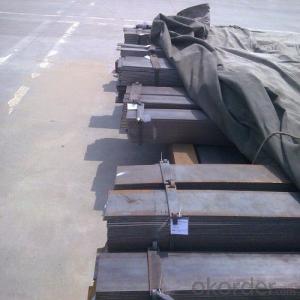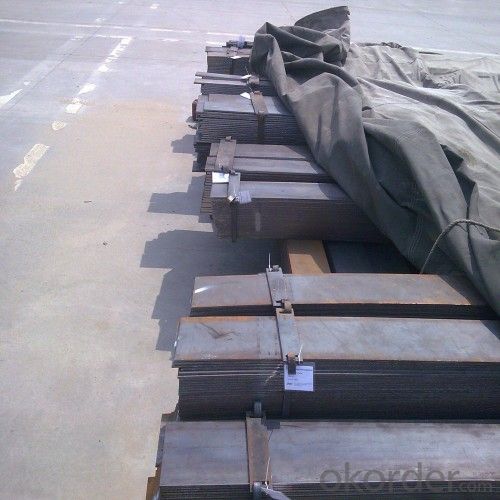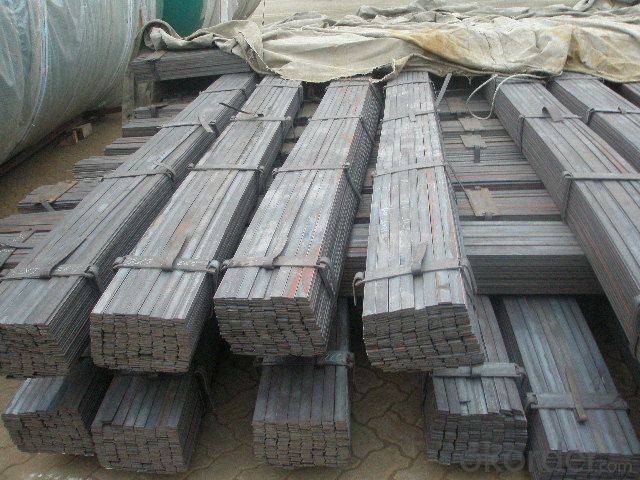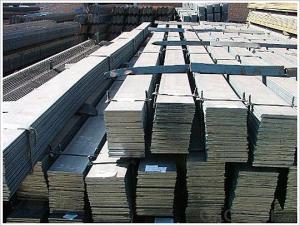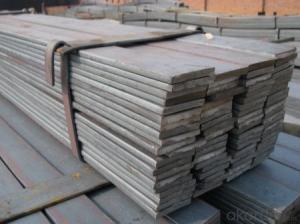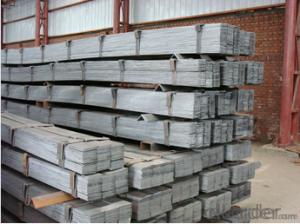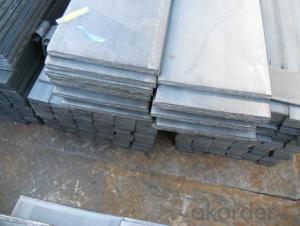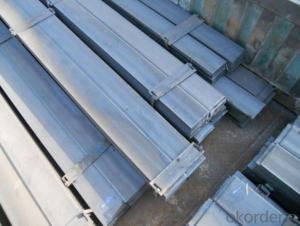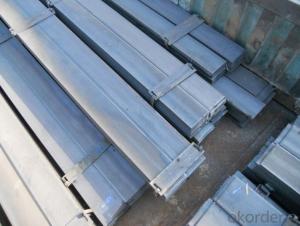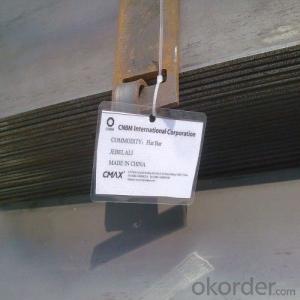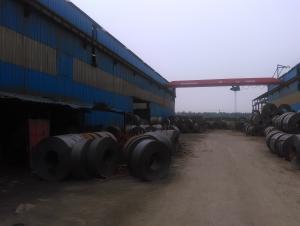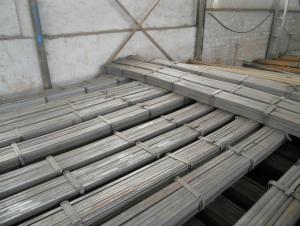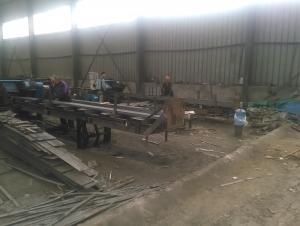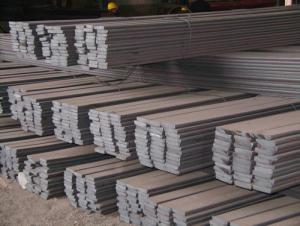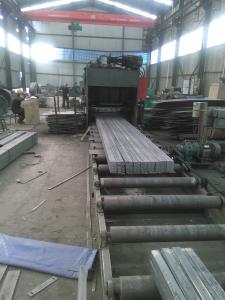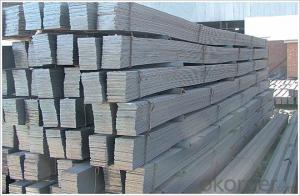Hot Rolled Flat Bars in Grade Q235B with Good Quality
- Loading Port:
- Tianjin
- Payment Terms:
- TT OR LC
- Min Order Qty:
- 25 m.t.
- Supply Capability:
- 10000 m.t./month
OKorder Service Pledge
OKorder Financial Service
You Might Also Like
Product Description:
OKorder is offering high quality Hot Rolled Steel Flat bars at great prices with worldwide shipping. Our supplier is a world-class manufacturer of steel, with our products utilized the world over. OKorder annually supplies products to European, North American and Asian markets. We provide quotations within 24 hours of receiving an inquiry and guarantee competitive prices.
Product Applications:
Hot Rolled Steel Flat bars are ideal for structural applications and are widely used in the construction of buildings and bridges, and the manufacturing, petrochemical, and transportation industries.
Product Advantages:
OKorder's Steel Flat bars are durable, strong, and resist corrosion.
Main Product Features:
· Premium quality
· Prompt delivery & seaworthy packing (30 days after receiving deposit)
· Corrosion resistance
· Can be recycled and reused
· Mill test certification
· Professional Service
· Competitive pricing
Product Specifications:
Manufacture: Hot rolled
Grade: Q195 – 235
Certificates: ISO, SGS, BV, CIQ
Length: 6m – 12m, as per customer request
Packaging: Export packing, nude packing, bundled
Chemical composition of Q235
Alloy No | Grade | Element(%) | ||||
C | Mn | S | P | Si | ||
Q235 | B | 0.12—0.20 | 0.3—0.7 | ≤0.045 | ≤0.045 | ≤0.3 |
Physical properties of Q235
Alloy No | Grade | Yielding strength point(Mpa) | Tensile strength (Mpa) | Elongation after fracture(%) | ||||||
Thickness (mm) | Thickness (mm) | |||||||||
≤16 | >16--40 | >40--60 | >60--100 | ≤16 | >16--40 | >40--60 | >60--100 | |||
≥ | ≥ | |||||||||
Q235 | B | 235 | 225 | 215 | 205 | 375--500 | 26 | 25 | 24 | 23 |
FAQ:
Q1: Why buy Materials & Equipment from OKorder.com?
A1: All products offered by OKorder.com are carefully selected from China's most reliable manufacturing enterprises. Through its ISO certifications, OKorder.com adheres to the highest standards and a commitment to supply chain safety and customer satisfaction.
Q2: How do we guarantee the quality of our products?
A2: We have established an advanced quality management system which conducts strict quality tests at every step, from raw materials to the final product. At the same time, we provide extensive follow-up service assurances as required.
Q3: How soon can we receive the product after purchase?
A3: Within three days of placing an order, we will begin production. The specific shipping date is dependent upon international and government factors, but is typically 10 to 20 workdays.
Images:
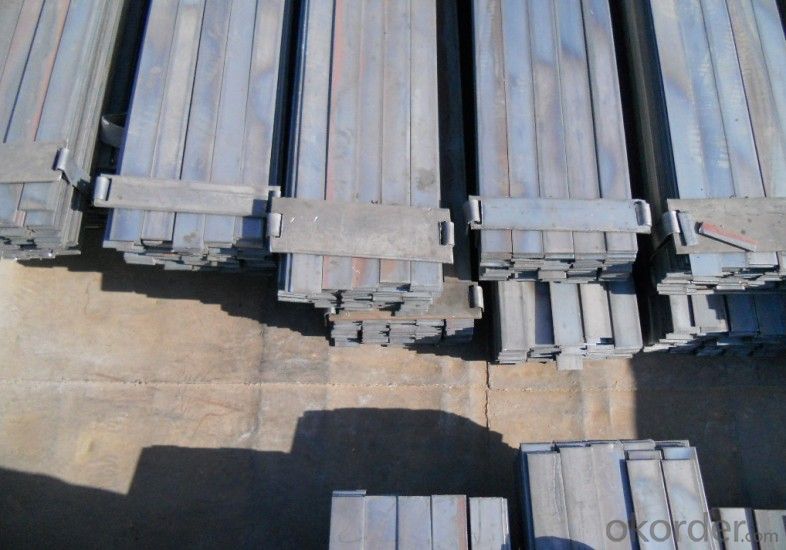
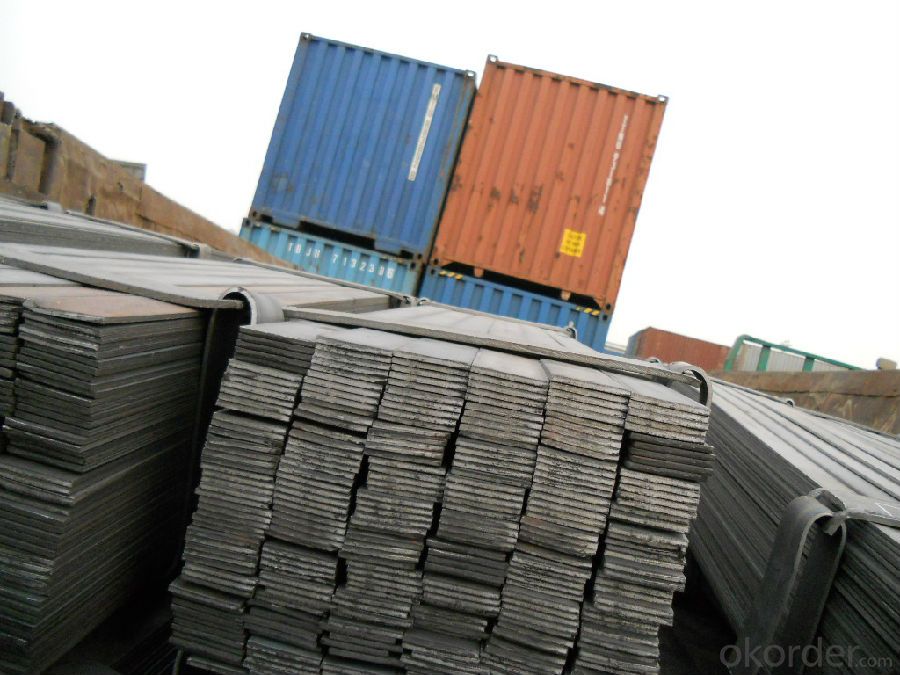
- Q: Can steel flat bars be used for making conveyor systems?
- Yes, steel flat bars can be used for making conveyor systems. Steel flat bars are commonly used as support beams or framework for conveyor systems due to their strength and durability. They provide a sturdy base for attaching conveyor belts and rollers, ensuring efficient and reliable material transportation.
- Q: What is the typical bend radius for steel flat bars?
- The typical bend radius for steel flat bars can vary depending on the specific dimensions and thickness of the bar, but generally, a safe bend radius is around twice the bar's thickness.
- Q: What are the different methods of surface buffing for steel flat bars?
- There are several methods of surface buffing for steel flat bars, each with its own advantages and applications. Some of the most common methods include: 1. Hand buffing: This method involves using a handheld buffing wheel or pad to manually polish the surface of the steel flat bar. It is a cost-effective option for small-scale projects and provides a good level of control over the buffing process. 2. Machine buffing: Machine buffing utilizes powered buffing machines equipped with rotating wheels or pads to buff the steel flat bars. This method offers faster and more consistent results compared to hand buffing, making it suitable for large-scale projects or industrial applications. 3. Abrasive belt buffing: This method involves using abrasive belts, usually made of sandpaper or cloth, to remove imperfections and achieve a smooth surface on the steel flat bar. It is a versatile technique that can be used for both light and heavy buffing, depending on the grit size of the belt. 4. Chemical buffing: Chemical buffing involves the use of specialized chemicals or compounds to remove oxidation, stains, or other surface contaminants from the steel flat bar. This method is often used in conjunction with mechanical buffing to achieve a high-quality finish. 5. Electropolishing: Electropolishing is an electrochemical process that removes a thin layer of material from the steel flat bar's surface, resulting in a smooth, mirror-like finish. It is commonly used in industries where hygiene and corrosion resistance are critical, such as pharmaceutical or food processing. Each of these methods has its own advantages and limitations, and the choice of the most suitable method depends on factors such as the desired finish, project scale, available equipment, and budget. It is essential to consider these factors and consult with professionals or experts in the field to determine the best method for surface buffing steel flat bars.
- Q: Are steel flat bars suitable for fabrication of industrial machinery?
- Yes, steel flat bars are suitable for the fabrication of industrial machinery. Steel flat bars are known for their high strength, durability, and versatility, making them a preferred choice in various industrial applications. They can be easily cut, welded, and formed into different shapes to meet specific requirements. Additionally, steel flat bars offer excellent load-bearing capabilities, ensuring the structural integrity and reliability of the machinery.
- Q: Can steel flat bars be used for making furniture frames or supports?
- Yes, steel flat bars can definitely be used for making furniture frames or supports. Steel is a versatile and durable material that offers excellent strength and stability, making it ideal for furniture construction. Steel flat bars provide a strong foundation and structural integrity to furniture frames or supports, ensuring longevity and stability. Additionally, steel can be easily shaped and welded, allowing for flexibility in design and customization. It is commonly used in the construction of various furniture pieces such as tables, chairs, shelving units, and bed frames. Overall, steel flat bars are a reliable choice for furniture frames or supports, providing a sturdy and long-lasting solution.
- Q: How do you determine the quality of a steel flat bar?
- The quality of a steel flat bar can be determined by considering a few factors. Firstly, the material composition should be examined, including the type of steel used and any additional alloying elements. The manufacturing process and standards followed during production also play a crucial role. Inspecting the surface finish, ensuring it is smooth and free from defects or imperfections, is essential. Additionally, evaluating the dimensions, such as width, thickness, and length, to meet the required specifications is important. Finally, conducting tests for strength, hardness, and resistance to corrosion can further help in assessing the quality of a steel flat bar.
- Q: Are steel flat bars commonly used in the energy sector?
- Yes, steel flat bars are commonly used in the energy sector. They are widely utilized in various applications such as construction of power plants, transmission towers, and pipelines due to their strength, durability, and versatility.
- Q: Are steel flat bars galvanized?
- No, steel flat bars are not typically galvanized. Galvanization is a process that involves coating steel with a layer of zinc to protect it from corrosion. While galvanization is commonly used for steel products, such as pipes or sheets, steel flat bars are usually left ungalvanized as they are primarily used for structural purposes rather than for protection against rust.
- Q: What are the different methods of polishing steel flat bars?
- There are several methods of polishing steel flat bars, including hand polishing, mechanical polishing, and electrochemical polishing. Hand polishing involves using abrasive materials like sandpaper or polishing compounds to manually buff the surface of the steel. Mechanical polishing utilizes machinery with rotating brushes or buffing wheels to achieve a polished finish. Electrochemical polishing involves immersing the steel in an electrolyte solution and applying an electric current to remove surface imperfections and achieve a smooth finish.
- Q: What is the maximum length-to-height ratio for steel flat bars?
- The maximum length-to-height ratio for steel flat bars is determined by various factors such as the specific steel grade, manufacturing process, and industry standards. However, in general, the length-to-height ratio for steel flat bars typically ranges from 6:1 to 12:1. This means that the length of the flat bar can be up to 6 to 12 times its height. It is important to note that exceeding these ratios may result in reduced structural integrity and increased risk of buckling or bending. Therefore, it is crucial to consult relevant industry standards and engineering guidelines to ensure safe and efficient usage of steel flat bars in different applications.
Send your message to us
Hot Rolled Flat Bars in Grade Q235B with Good Quality
- Loading Port:
- Tianjin
- Payment Terms:
- TT OR LC
- Min Order Qty:
- 25 m.t.
- Supply Capability:
- 10000 m.t./month
OKorder Service Pledge
OKorder Financial Service
Similar products
Hot products
Hot Searches
Related keywords
